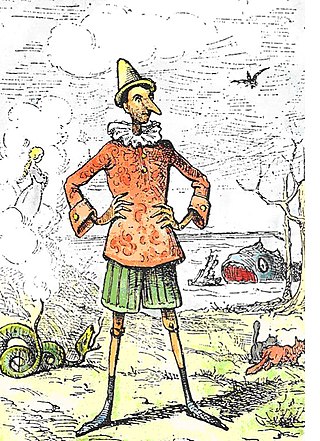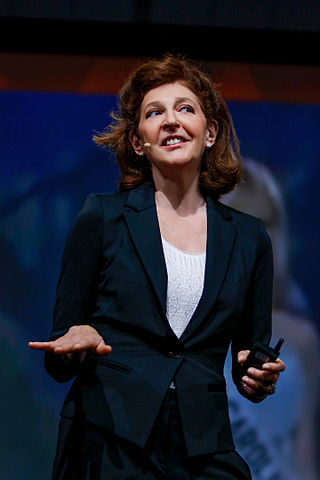Related Research Articles

A polygraph, often incorrectly referred to as a lie detector test, is a junk science device or procedure that measures and records several physiological indicators such as blood pressure, pulse, respiration, and skin conductivity while a person is asked and answers a series of questions. The belief underpinning the use of the polygraph is that deceptive answers will produce physiological responses that can be differentiated from those associated with non-deceptive answers; however, there are no specific physiological reactions associated with lying, making it difficult to identify factors that separate those who are lying from those who are telling the truth.
Deception is the act of convincing one or many recipients of untrue information. The person creating the deception knows it to be false while the receiver of the message has a tendency to believe it. It is often done for personal gain or advantage. Deception can involve dissimulation, propaganda and sleight of hand as well as distraction, camouflage or concealment. There is also self-deception. It can also be called, with varying subjective implications, beguilement, deceit, bluff, mystification, ruse, or subterfuge.

Interrogation is interviewing as commonly employed by law enforcement officers, military personnel, intelligence agencies, organized crime syndicates, and terrorist organizations with the goal of eliciting useful information, particularly information related to suspected crime. Interrogation may involve a diverse array of techniques, ranging from developing a rapport with the subject to torture.

A lie is an assertion that is believed to be false, typically used with the purpose of deceiving or misleading someone. The practice of communicating lies is called lying. A person who communicates a lie may be termed a liar. Lies can be interpreted as deliberately false statements or misleading statements, though not all statements that are literally false are considered lies – metaphors, hyperboles, and other figurative rhetoric are not intended to mislead, while lies are explicitly meant for literal interpretation by their audience. Lies may also serve a variety of instrumental, interpersonal, or psychological functions for the individuals who use them.
Self-deception is a process of denying or rationalizing away the relevance, significance, or importance of opposing evidence and logical argument. Self-deception involves convincing oneself of a truth so that one does not reveal any self-knowledge of the deception.

Paul Ekman is an American psychologist and professor emeritus at the University of California, San Francisco who is a pioneer in the study of emotions and their relation to facial expressions. He was ranked 59th out of the 100 most cited psychologists of the twentieth century. Ekman conducted seminal research on the specific biological correlations of specific emotions, attempting to demonstrate the universality and discreteness of emotions in a Darwinian approach.

A microexpression is a facial expression that only lasts for a short moment. It is the innate result of a voluntary and an involuntary emotional response occurring simultaneously and conflicting with one another, and occurs when the amygdala responds appropriately to the stimuli that the individual experiences and the individual wishes to conceal this specific emotion. This results in the individual very briefly displaying their true emotions followed by a false emotional reaction.
Pathological lying, also known as pseudologia fantastica, is a chronic behavior characterized by the habitual or compulsive tendency to lie. It involves a pervasive pattern of intentionally making false statements with the aim to deceive others, sometimes for no clear or apparent reason, and even if the truth is beneficial to the liar. People who engage in pathological lying often claim to be unaware of the motivations for their lies.
Lie detection is an assessment of a verbal statement with the goal to reveal a possible intentional deceit. Lie detection may refer to a cognitive process of detecting deception by evaluating message content as well as non-verbal cues. It also may refer to questioning techniques used along with technology that record physiological functions to ascertain truth and falsehood in response. The latter is commonly used by law enforcement in the United States, but rarely in other countries because it is based on pseudoscience.
Interpersonal deception theory (IDT) is one of a number of theories that attempts to explain how individuals handle actual deception at the conscious or subconscious level while engaged in face-to-face communication. The theory was put forth by David Buller and Judee Burgoon in 1996 to explore this idea that deception is an engaging process between receiver and deceiver. IDT assumes that communication is not static; it is influenced by personal goals and the meaning of the interaction as it unfolds. IDT is no different from other forms of communication since all forms of communication are adaptive in nature. The sender's overt communications are affected by the overt and covert communications of the receiver, and vice versa. IDT explores the interrelation between the sender's communicative meaning and the receiver's thoughts and behavior in deceptive exchanges.
Statement analysis is a technique used to determine whether a suspect is telling the truth or being deceptive based on linguistic indicators. The basic principles of statement analysis are straightforward: a suspect always reveals much more than they realize. Language moves so quickly that no one has complete control over what they say and try to conceal.
Lie to Me is an American crime drama television series. It originally ran on Fox from January 21, 2009, to January 31, 2011. In the show, Dr. Cal Lightman and his colleagues in The Lightman Group accept assignments from third parties, and assist in investigations, reaching the truth through applied psychology: interpreting microexpressions, through the Facial Action Coding System, and body language. In May 2009, the show was renewed for a second season consisting of 13 episodes; season two premiered on September 28, 2009. On November 24, 2009, Fox ordered an extra nine episodes for season two, bringing the season order to 22 episodes.
Non-verbal leakage is a form of non-verbal behavior that occurs when a person verbalizes one thing, but their body language indicates another, common forms of which include facial movements and hand-to-face gestures. The term "non-verbal leakage" got its origin in literature in 1968, leading to many subsequent studies on the topic throughout the 1970s, with related studies continuing today.
The Silent Talker Lie Detector is an attempt to increase the accuracy of the most common lie detector, the polygraph, which does not directly measure whether the subject is truthful, but records physiological measures that are associated with emotional responses. The Silent Talker gives the evaluator access to viewing microexpressions by adding a camera to the process. The creators claim that microexpressions are actual indicators of lying, while many other things could cause an emotional response. Since microexpressions are fleeting, the camera allows the examiner to capture data that otherwise would have been missed. However, the scientific community is not convinced that this system accomplishes what it claims and some call it pseudoscience.
Othello error occurs when a suspicious observer discounts cues of truthfulness. Essentially the Othello error occurs, Paul Ekman states, "when the lie catcher fails to consider that a truthful person who is under stress may appear to be lying," their non-verbal signals expressing their worry at the possibility of being disbelieved. A lie-detector or polygraph may be deceived in the same way by misinterpreting nervous signals from a truthful person. The error is named after William Shakespeare's tragic play Othello; the dynamics between the two main characters, Othello and Desdemona, are a particularly well-known example of the error in practice.
Aldert Vrij is a professor of applied social psychology in the department of psychology at the University of Portsmouth in Portsmouth, England. His main area of expertise is utilizing nonverbal and verbal cues of deception, also called lie detection. Author of numerous research articles, Vrij has found that human beings can become more accurate judges of truth and deception not by passive observation of a speaker's verbal and nonverbal behavior but by tactically outsmarting liars through use of various techniques.
Mark G. Frank is a communication professor and department chair, and an internationally recognized expert on human nonverbal communication, emotion, and deception. He conducts research and does training on micro expressions of emotion and of the face. His research studies include other nonverbal indicators of deception throughout the rest of the body. He is the Director of the Communication Science Center research laboratory that is located on the North Campus of the University at Buffalo. Under his guidance, a team of graduate researchers conduct experiments and studies for private and government entities. Frank uses his expertise in communication and psychology to assist law enforcement agencies in monitoring both verbal and nonverbal communication.

Pamela Meyer is an American author, certified fraud examiner, and entrepreneur. Described by Reader's Digest as "the nation's best known expert on lying," Meyer is the author of the 2010 book Liespotting: Proven Techniques to Detect Deception. Her 2011 TED talk, "How to Spot a Liar," has exceeded 31 million views and is one of the 20 most popular TED talks of all time.
Truth-default theory (TDT) is a communication theory which predicts and explains the use of veracity and deception detection in humans. It was developed upon the discovery of the veracity effect - whereby the proportion of truths versus lies presented in a judgement study on deception will drive accuracy rates. This theory gets its name from its central idea which is the truth-default state. This idea suggests that people presume others to be honest because they either don't think of deception as a possibility during communicating or because there is insufficient evidence that they are being deceived. Emotions, arousal, strategic self-presentation, and cognitive effort are nonverbal behaviors that one might find in deception detection. Ultimately this theory predicts that speakers and listeners will default to use the truth to achieve their communicative goals. However, if the truth presents a problem, then deception will surface as a viable option for goal attainment.
Motivation impairment effect (MIE) is a hypothesised behavioral effect relating to the communication of deception. The MIE posits that people who are highly motivated to deceive are less successful in their goal when their speech and mannerisms are observed by the intended audience. This is because their nonverbal cues, such as adaptor gestures, sweating, kinesic behaviors, verbal disfluencies, etc., tend to be more pronounced due to increased stress, cognitive load, and heightened emotional state. There is some disagreement regarding the MIE hypothesis, with a few nonverbal communication scholars arguing that deception should not be examined as separate for senders and receivers, but rather as an integral part of the overall process.
References
- 1 2 "Lying and deceit - the Wizards Project".
- 1 2 Granhag, Pär; Strömwall, Leid (2004). The Detection of Deception in Forensic Contexts. Cambridge University Press. p. 269. ISBN 978-0-521-54157-2.
- ↑ Camilleri, J. (January 21, 2009). "Truth Wizard knows when you've been lying". Chicago Sun-Times.
- 1 2 http://www.onthemedia.org/transcripts/2009/01/23/08 Archived 2009-06-07 at the Wayback Machine The Face Never Lies
- ↑ Bond, Charles F & Uysal, Ahmet. (2007). "On lie detection 'wizards'". Law and human behavior31.
- ↑ Bond, C. F. (2008), "Commentary: A few can catch a liar, sometimes: Comments on Ekman and O'Sullivan (1991), as well as Ekman, O'Sullivan, and Frank (1999)". Applied Cognitive Psychology22:1298–1300.
- ↑ Ekman, P., O'Sullivan, M. and Frank, M. (2008), "Reply scoring and reporting: A response to Bond (2008)". Applied Cognitive Psychology22:1315–1317.
- ↑ Bond, Gary D. (2008). "Deception detection expertise" Law and human behavior32.
- 1 2 O'Sullivan, Maureen. (2007). "Unicorns or Tiger Woods: are lie detection experts myths or rarities? A response to on lie detection "wizards" by Bond and Uysal". Law and human behavior31 JSTOR 4499519
- ↑ Paul Ekman, Maureen O'Sullivan, Mark Frank. . Applied Cognitive Psychology.
- ↑ Bond, Charles (December 2008). "Commentary a few can catch a liar, sometimes: Comments on Ekman and O'Sullivan (1991), as well as Ekman, O'Sullivan, and Frank (1999)". Applied Cognitive Psychology . 22 (9): 1298–1300. doi:10.1002/acp.1475.